In the conditions of the coronavirus wandering around the planet, many companies have to get out of the situation. We have already talked about the cancellation of events more than once. Google has now optimized its resources and canceled updates to some of its products. The question is when they will come out again and how will the fans of the brand put up with it. OnePlus was also noted this week, but not with a new smartphone, but with a new … logo. Let's try to figure out why it was needed. Let's also talk about the crazy new patent Xiaomi. This smartphone will break your brain. All this and more in our traditional weekly summary news release.
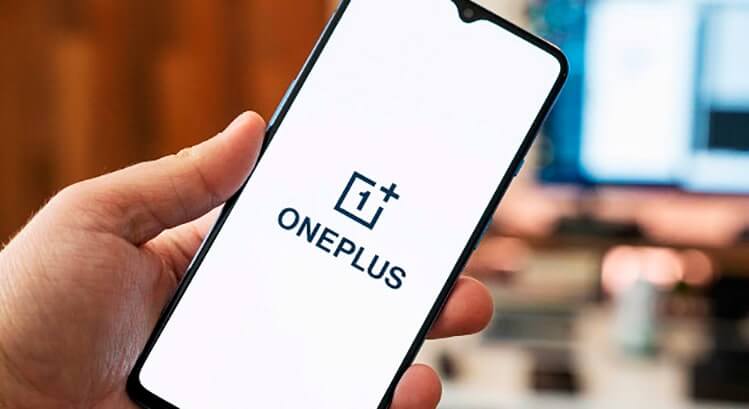
It's time for OnePlus to change its logo.
On Huawei you can install WhatsApp, Instagram and other 'forbidden'
Despite the fact that Google seems determined to return to the partnership with Huawei, the Chinese seem to be in the exact opposite direction. Having not received permission to publish WhatsApp clients, Instagram, Facebook and other American online services in my AppGallery, Huawei came up with an alternative way to download them to branded devices . For this, the developers of the Chinese company have created a completely new AppSearch application, which searches for the applications the user needs in third-party sources and allows them to be installed directly from there.

Huawei understands that Instagram and WhatsApp will not appear in AppGallery, and therefore goes to drastic measures
AppSearch is still in beta testing, and therefore not all users can get access to it. Apparently, so far Huawei is generally testing its new service only in Germany, since all the testers who shared their impressions of it were from there.
https://youtu.be/khWteywYChE
According to testers who got access to AppSearch, it is a kind of aggregator that collects information from third-party application directories and tells the user exactly where to download the program he needs. At the same time, AppSearch itself does not provide direct download, but only brings the conditional seller and buyer, which are not connected with Huawei itself. Therefore, the user agreement of the service states that the company refuses to assume any responsibility either to one party or to the other.
Despite this, smartphone users Huawei have the opportunity to download the program they need, in fact, without having access to Google Play. Thus, they can install clients Facebook, WhatsApp, Spotify, Telegram, all Google services and many, many other applications that are not available in AppGallery due to US sanctions, which prohibit American enterprises from cooperating in any way with Huawei, including by placing their products on the sites of the Chinese company, which includes the app store.

Huawei may also have different applications
At the moment, at least 5 directories are known, from which AppSearch offers to install the necessary applications:
- Amazon App Store
- Huawei AppGallery
- APKMirror
- APKPure
- APKMonk
However, in order to download an application, in some cases you have to install the stores themselves first, in the range of which they are available, as, for example, in the case of Amazon AppStore. In addition, AppSearch searches not only through catalogs, but also through the official websites of applications. Therefore, if the developer has allowed the download of his brainchild directly from the site, smartphone users Huawei will have this opportunity. Practice shows that it is quite safe, at least if you download some common application.
How good and convenient is what you did Huawei? In my opinion, a solution like AppSearch has been asking for a long time and its appearance was only a matter of time. After all, users, no matter how loyal they are, are unlikely to last long without the apps they need, on enthusiasm alone. Therefore, I see a really cool tool in AppSearch, which is not only convenient, since it allows users not to search for alternative directories on their own, but at the very least is protected, since it gives them some kind of risk-free guarantee. Another thing is that not everyone can understand this.
The problem with AppSearch is that only I and a few other people who really understand the topic see the security guarantee here. Take APKMirror, for example. Despite the fact that I know about this service and know that it is safe, since all applications that go there are tested, many have no idea what it is. The situation is complicated by the fact that APKMirror and others like them offer to install programs in APK format. This can alienate many users, because, firstly, the devil knows what these APKs are in their composition (remember, people have no idea what kind of site it is), and, secondly, Google itself has already introduced a partial ban on their installation. Therefore, on the spot Huawei I would nevertheless try to calm the conflict and regain the right to cooperate with the Americans or arrange a large-scale educational program for users to install applications from their alternative sources.
Google Camera Portrait Mode Now Available On Low Cost Android
The Google Camera app has long been considered the reference solution for Android smartphones. Support for night mode, high-quality portraits and advanced image stabilization algorithms – all this made it really the best, because no one else could offer the same high-quality implementation of all these functions. The only downside to 'Google Camera' was the limited compatibility with Pixel smartphones only. Recently, however, the developers of the search giant got an insight, and they decided that it was time to present a separate version of the application for inexpensive devices, forced to be content with rather mediocre solutions for photo and video shooting.
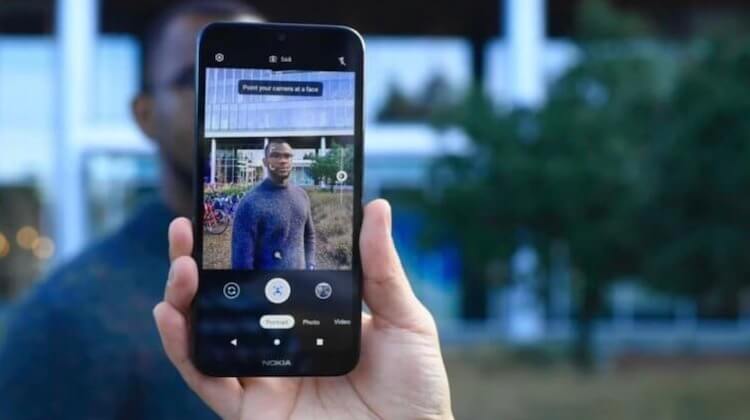
Google Camera is now available on smartphones with Android Go. True, in a truncated form
Camera Go is a simplified version of the original 'Google Camera' and, as the name probably suggests, only targets smartphones running Android Go. These are ultra-budget devices with a small amount of RAM – usually 1 GB – and quite passable characteristics. Because of this, the usual versions of programs on them do not work in the best way, but Google has created a special line of applications with the Go prefix, which it managed to facilitate as much as possible and make it literally fly on a par with the flagships. But back to Camera Go.

Camera Go's interface is designed in the same style as 'Google Camera'. However, the arrangement of some elements is slightly different. For example, the shutter button is located slightly higher – above the mode switch bar. Nevertheless, like the original, Camera Go is not just an add-on, like most camera applications, but is deeply integrated into the operating system and literally squeezes all the juices out of the photographic module. As a result, the output is really high-quality photos, including in portrait mode. It's a pity that the Night Shift mode, which brightens the frame, was not delivered.
At one time for the 'Google Camera' the developers of the Google company have designed a special two-pixel system for estimating the depth of the frame, when each pixel was divided in two and as if perceived the image from different angles, creating a kind of parallax effect. That is, in fact, the camera took not one picture, but two, and then combined them with each other to obtain volume and the subsequent blurring of the background behind the subject. Thanks to this, it was possible to take portrait photos with a single camera. Camera Go works the same way.

An inexpensive smartphone will shoot better with this camera.
What Google managed to do is really cool, because until now, users of smartphones based on Android Go perceived them mainly as dialers, because there could be no talk of any photography. Well, in the end, what will happen with an 8 megapixel camera and a matrix with a mosquito's eye? It is clear that with such a set, it was already for happiness if the photo turned out at least not overexposed or out of focus. However, Camera Go, through advanced software algorithms, will be able not only to unleash the potential of cameras in budget devices, but even to embellish them.
By introducing Camera Go, Google essentially gave users around the world a good reason to buy a smartphone on Android Go. It is clear that from the second phone, for the role of which they are usually purchased, rarely anyone requires outstanding photographic capabilities. However, for children, retirees and not the most picky users, the opportunity to take high-quality photography will at least not be superfluous. Soon Camera Go will be available on Google Play and those who use compatible smartphones will be able to evaluate it personally.
Google has suspended updates to its products
Not a day goes by when a message appears about a new closed border or a canceled event. All this is due to the coronavirus raging in the world. News is sometimes more like reports from the front of hostilities. We will have to live in such a world for a while. It would seem that you sit at home and enjoy online, including our website, but no. Here, too, difficulties arise. This is due to the lack of employees, and after the transfer of the creation and production of the series, the restrictions are imposed on the Google Chrome updates. How can this be if the release has never been delayed? And most importantly, when will the updates start coming out?
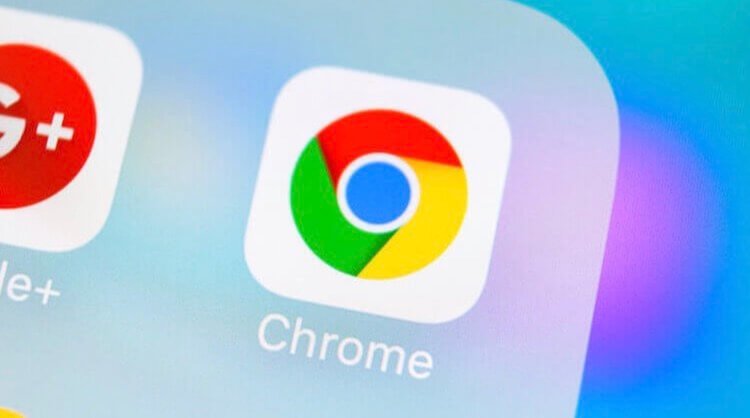
Updates to this browser have always been important.
For several years now, Google Chrome has been receiving updates with enviable consistency. As a result, users get new, new and new functions. This happens every six weeks and the deviations usually did not exceed a couple of days. In general, the schedule was kept and it was very pleasant.
Following this frequency, updates began to be released for Chrome OS. That was nice too, since that speed is fast enough to be safe. Well, of course, users knew when it would be possible to roll out a new product.

Sometimes Google Chrome updates were fresh. [
Now, due to a global epidemic or, more simply, a pandemic, this mechanism has broken down. True, there is one “but”. Users will still be safe. Only browser updates will stop, but the security fixes will not be affected. We can say that the company has reduced resource costs in difficult conditions, but not to the detriment of the most important thing – safety.
Information that changes are coming has appeared on the Chrome Releases blog.
'Due to the adjusted schedules, we are currently suspending future releases of Chrome and Chrome OS. Our main goals are to ensure that they remain stable, safe and reliable for all who depend on them. We will continue to prioritize any security updates that will be included in Chrome 80 '.
The beta version of Google Chrome 81 was released last month, but it is not destined to become fully functional. Initially, its release was supposed to take place the day before yesterday – March 17, 2020. If it came out today or tomorrow, no one would have noticed the deviation from the schedule, but with its statement, Google made it clear that the version was not ready at all. Apparently, she stopped working on it a couple of weeks ago.
There is still time until the release Chrome OS. Its release was supposed to take place on March 24, but the company's statement applies to it too. Accordingly, you shouldn't wait for the update for Chrome OS to be released either.
There is no exact information about this. Someone talks about quarantine periods of several weeks, while others – several months. Most forecasts in terms of no more than three months, but there can be no exact certainty about this.

Security updates will continue to be released. Don't worry about that.
First of all, it is impossible to say with certainty due to the fact that the coronavirus, which is now spreading across the planet, does not even think to stop. It infects several thousand people every day. Their number has already reached 215,000, with almost more than 8,700 dead.
A vaccine could help in stopping it, but so far only what is known about it is that it is being dealt with. When she will be ready, it is not at all clear. Considering how long it takes for clinical trials, we will have a long wait.
Most likely, the work process of large companies will be able to optimize and adapt to the remote work of employees, but this also takes time. At the same time, it seems to me that the stable release of updates will begin even before the end of the pandemic.
Every person in every city on the way to work is in close contact with hundreds, if not thousands, of people in transport. With tens or hundreds he contacts in the office. There are also people with whom the contact is as close as possible – handshakes, meeting at the cooler, handing over documents, elevator buttons, and the like. In general, we should not be afraid of the virus, but of people who are indifferent to it. Our colleague Alexander Bogdanov proved this by his example.
There is an R0 indicator that determines the estimated number of people who will become infected after contact with an infected patient. For some diseases, like measles, it is 12-14. For the coronavirus, R0 is “only” 2.2-4.6. And even if it is relatively small, the risks are still very large and in this situation it is better to play it safe.
This reinsurance inevitably leads to disruptions in corporate communications. Of course, there are messengers, video communication and other means of communication, but they are not always effective. Sometimes it is much easier to just turn around and talk to a person, rather than conduct a half-hour correspondence. Plus, no one canceled the general meetings, which became even more difficult in the conditions of working from home.
When everything is working out, we will get updates, presentations, conferences and everything else that we are so used to. For now, you just have to wait and be patient.
The new OnePlus. This time the logo
Industrial design is a very interesting topic and we have already written about it on one of our sites. It is a pity that manufacturers have ceased to be bold and offer solutions that do not differ much from competitors. As a result, we have what we have – the monotonous world of technology. But when changes concern the design of gadgets, it is at least nice, but sometimes manufacturers change their logo for some reason. And okay, if the changes were interesting. As a rule, they also leave a lot to be desired. For some reason, OnePlus has chosen this path. It would be better if the G8 were released faster.
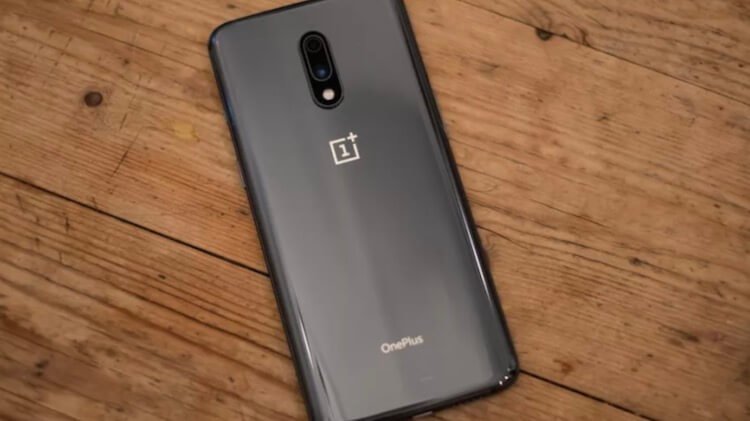
Many people love this smartphone.
Many companies are constantly experimenting with their corporate identity. Some change color, others – shape, and still others completely redraw it. So, for example, it was with the logo Apple, when they went from the picture with Newton to the apple.

The logo Apple has changed many times.
Automakers are changing their logo designs too. This is especially true for those manufacturers that have existed for many years. Everything is logical here! What was stylish seventy years ago now looks like something antediluvian.
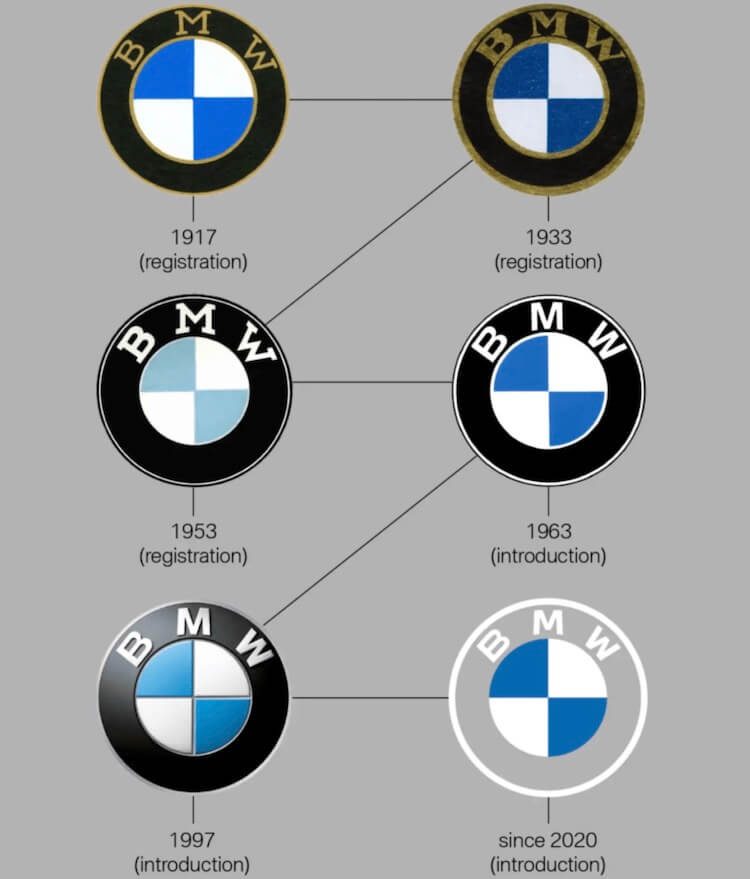
This is how the BMW logo changed.
Often, in addition to the logo, many other things change in the corporate culture of the company. Someone changes the design of the retail network, someone introduces new elements in the design of products, and someone disguises employees and changes the style of advertising.
All this is necessary only in order to become more attractive to customers and sell more of your products or services. This is part of the evolutionary process in trading.
Now the wind of change has blown to OnePlus. The company exists quite recently, but has already decided to upgrade. This is the first logo change in her history.

Old logo on the left, new one on the right.
The company even explained the reasons for the logo change. The one now reads better when changing the application, and the “+” in the corner of the square has become larger. This is a tribute to the dedicated fans who have played a key role in making the company's smartphones better.
Personally, such changes seem far-fetched to me. Respect for the community is, of course, welcome, but does not pull the logo update. After all, now we need to change all the blanks, templates and other printed materials.

This is also part of the rebranding.
In fact, this is not all. The company said in a statement that this will make the logo more recognizable in the media and create a clearer connection between the symbol and the brand.
If they consider such minor changes to be important, that is their right. But the design change looks more dubious as it has now become too standard. But he was really changed not in words, but in deeds.
The company's motto has always flaunted on its printed products and the default screensavers of smartphones. He was recognizable and somehow even attractive. Now it has become just letters. Although, you have the right to disagree with me.

This will change the spelling of the famous phrase. On the left is the old version, and on the right is the new one.
However, this change was also explained by the pursuit of brand recognition, which I now doubt. But, probably, OnePlus designers know their business better than me. I can only express my opinion.
The translation of the motto sounds like “never give up”. At one time, this symbolized the spirit of rebellion inherent in the brand's smartphones. Many people liked it and the words stuck. It is unlikely that the company will abandon them in the near future.
Perhaps we will see the new logo and motto writing style in the next generation of the OnePlus 8 smartphone, which fans of the brand are eagerly awaiting. I already wrote about him and told that now there will be as many as three actual models.
The top model will be equipped with Snapdragon 865, 12/256 GB memory, full protection and a screen with a diagonal of 6.7 inches. All this beauty will cost $ 870. In Russia and Europe, the price is likely to be equivalent to 1,000 euros. 85,000 rubles for OnePlus. Not bad, huh?
Judging by the comments in our Telegram chat, there are a lot of OnePlus fans among our subscribers. If you are one of them too, I suggest joining the discussion. At the same time, share your opinion in the comments to this article and take part in a small vote. I am sure there will be different opinions on the redesign. The question is, in what proportions.
New patent Xiaomi

The company has patented the phone, the top of which can be turned out, which will make it possible to use the front camera as the main one.
How to Xiaomi surprise people? That's right – you need to release the most weird phone, or at least a patent. The company has patented a very strange phone, the top of which folds out towards the outside, allowing you to use the front camera as the main one. Most likely, there will be some kind of hinge at the place of the fold, which can be an eyesore, let's see how the company solves this problem. The idea is not new, earlier Asus in its smartphone Zenfone 6 already offered its consumers something similar, but in the case of the phone Xiaomi it is about something much more revolutionary.
The device looks like this:

Smartphone patent Xiaomi

Smartphone patent Xiaomi with rear view. You can see how the phone case turns inside out.
You can immediately identify its shortcomings. You just need to understand how manufacturers usually place the insides of their devices. As a rule, the main board with the camera is located on the top. Since the motherboards of smartphones have not learned to bend yet, most likely there will be a board with cameras at the very top, and a board with a processor and other chips will be located just below. The camera board will connect to the main board through a cable.
The downside is that the place of the fold will turn out to be unused, and the capacity of the battery in this case may suffer by 20-25%. That is, if Xiaomi normally equips phones with a 4500mAh battery, that device could get a 3500mAh battery.
Another important point is the hinge, which will always be at eye level and frankly interfere when using the phone. You can also notice on the smartphone from the patent 3 cutouts. Two for cameras and one for flash. The main cameras are usually larger than the front ones, so you can imagine how large the cutouts will be. And in this case, the status bar at the top will take up too much space.
Besides Xiaomi, as a rule, they use the same body design in phones, so this option will make the phone extremely expensive. I would not be surprised if it will cost consumers $ 1500-2000, simply because Xiaomi does not yet know how to effectively produce phones with a unique design. Samsung, which is the leader in this matter, cannot offer a cheap Z Flip, what can we say about Xiaomi.
It would be much better if Xiaomi did not reinvent the wheel, as they did with Mi Alpha and are now doing with another future phone, but created a product based on already tested options. For example, the form factor Huawei of the Mate Xs is very good, so why not release a similar device, but with a more attractive price tag and, for example, interesting software? Xiaomi can show a flexible phone on a clean Android, and it will be interesting to everyone, because no one has done this before. But no, they went along some strange path in order to please their own ideas that they are not worse than other manufacturers, but I think it is worth thinking realistically and understanding that Xiaomi is loved not for experiments, but for a low price.
Oppo now offers extremely expensive phones in the flagship segment, which few people in Russia are interested in, I'm afraid Xiaomi is stepping on the same rake, not quite realizing that people will not buy expensive phones under the brand 'Xiaomi '. For example, the recently presented Mi 10 is priced at $ 900 in maximum modification.
It is interesting to know your opinion. Do you think it's worth Xiaomi experimenting? Or maybe it's better to stop at what you're already good at – budget devices? Share your opinion in the comments and do not forget to subscribe to us in Yandex.Zen.
